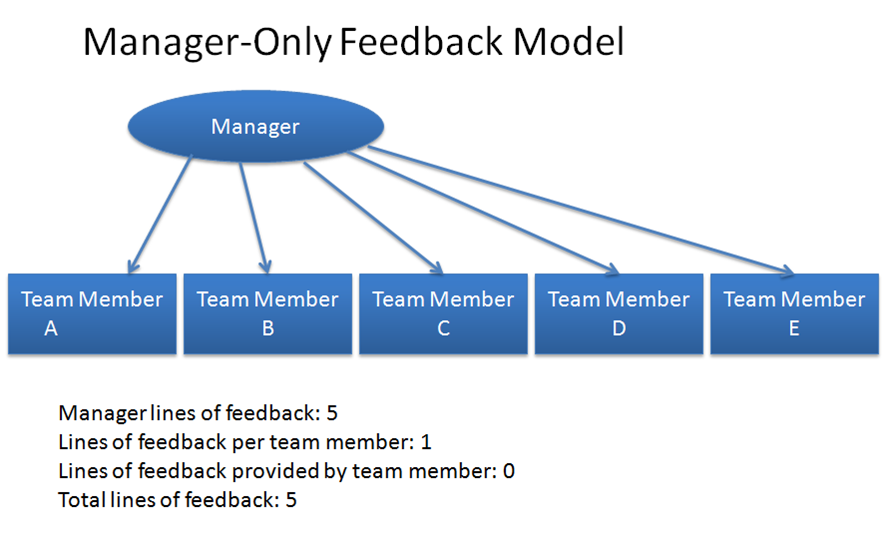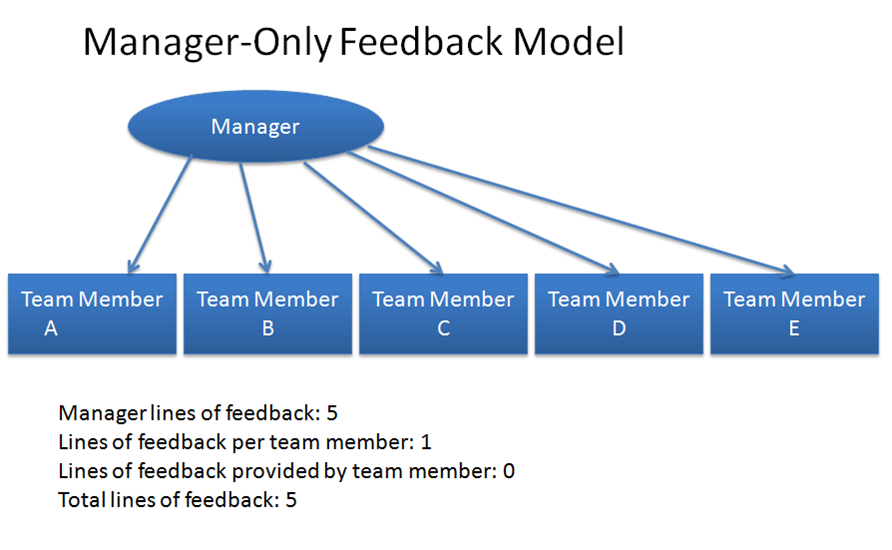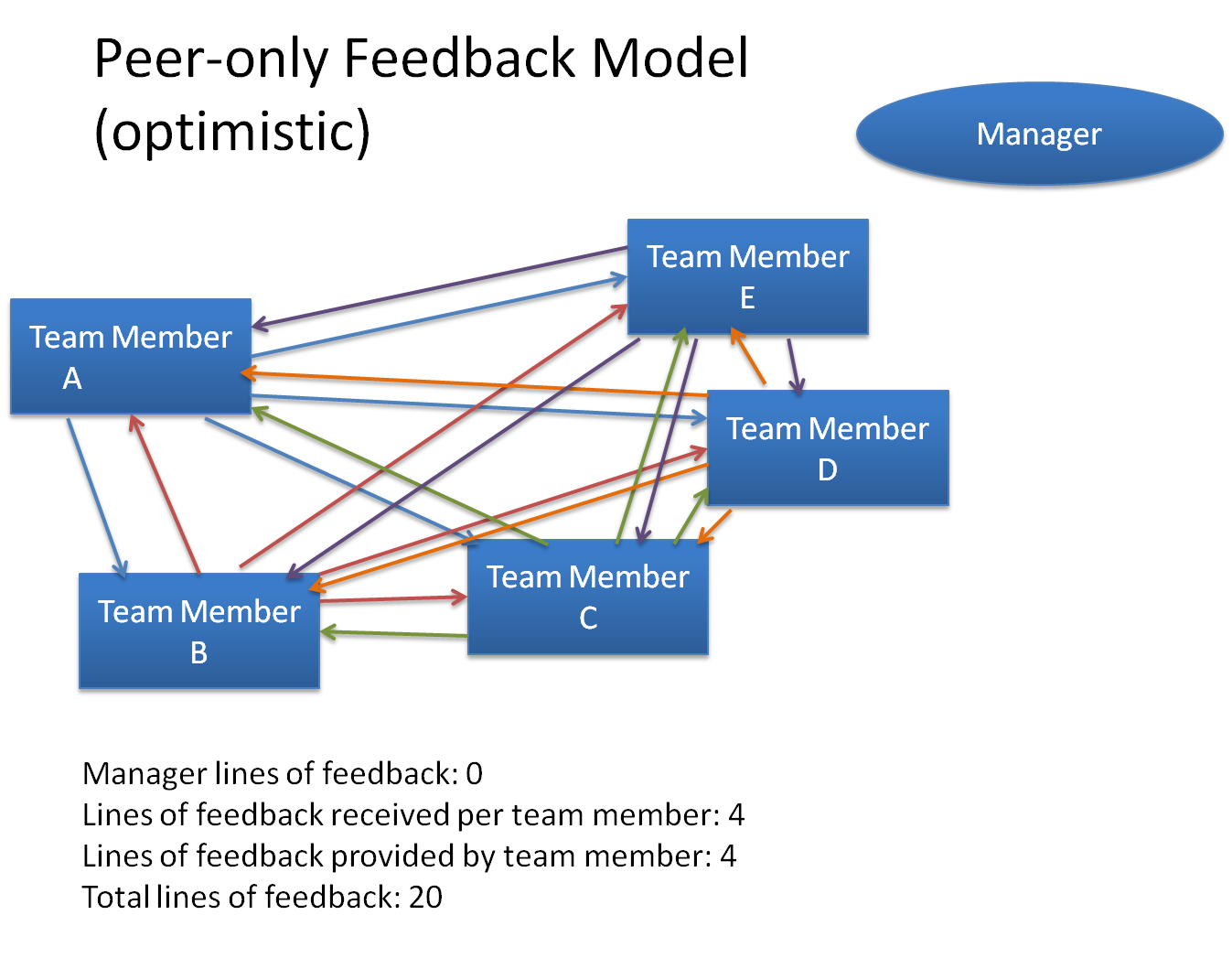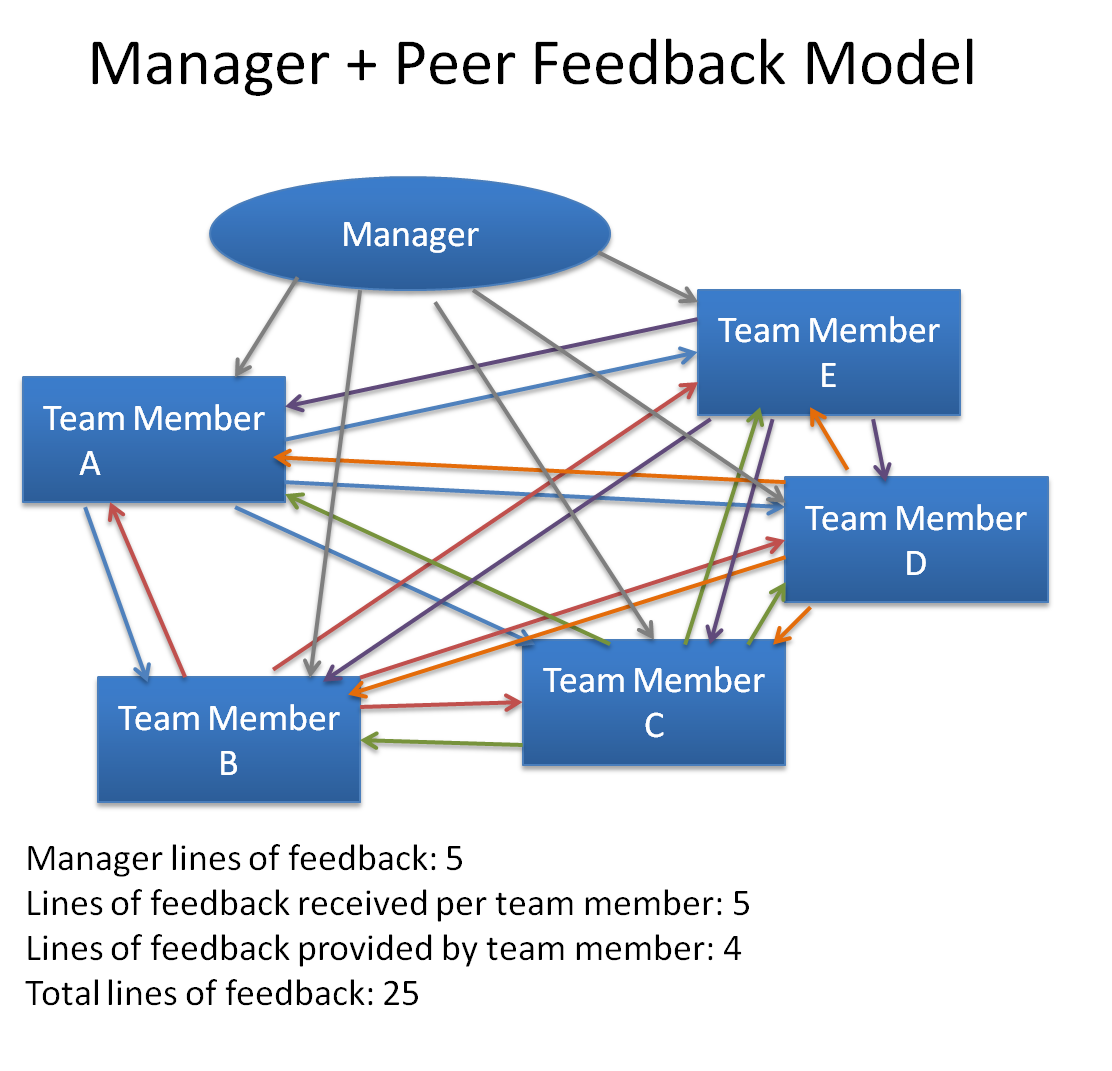An opportunity to increase the amount of performance feedback on your team
Peer feedback is frequently given via indirect surveys, perhaps as part of a 360-degree feedback program. I would like to argue that this doesn’t really count as peer feedback, since it is time-delayed, indirect, and frequently non-actionable. I’m more in favor of direct peer feedback, since it is specific and immediate, can be focused on improving performance and teamwork. However, there are some reasons to be wary direct peer feedback, as I detail in my previous post.
However, the main reason I’m in favor of direct peer feedback is that it multiplies the amount of performance feedback that team members receive. Let me explain:
A traditional model for how employees improve their performance is through manager observation, and then the manager provides coaching and corrective feedback. For a team of five people, this is what it looks like:
Look familiar? This is the popular conception for how employees receive feedback on their performance. It is predicated on the belief that the manager has enough expertise in all the areas of the team performance to provide feedback, and the manager actually has the skill to provide feedback, which, alas, is not always the case. When most of us start a job, this is the general mental model that we have. After all, the manager is the one who evaluates our performance, and knows the expectations for performance! Employees expect to receive feedback from the manager on performance.
When looking at the stats behind the model for this 5-person team, the number people the employee receives feedback from is one person. That’s it. And the feedback provider is stretched across the rest of the team. The focus from the manager, even for this somewhat small team is not likely to be that great. Additionally, the manager is not likely to be around to observe and provide feedback on the employee, and especially not specifically and immediately. It’s a tough model for the manager because of its manager-centrism. Alas, it is still the reigning model.
Then you have the hand’s-off manager:
Perhaps you’ve seen this? In this model, there is no feedback at all. Don’t expect the team to ever get better. Don’t expect employees to get better. Do expect employees to make up their own standards of quality and practices, but don’t expect them to share them with anyone.
If your team is lucky, and forms as a team despite this “hands off” model, you might see the model evolve into a peer feedback model:
Here the peers start to take charge and make sure that they at least work with each other to get better. As described in my previous article, it is possible or even likely that these lines of feedback may be bad and damaging. The above image is the most optimistic outcome. Also, there is the downside of the manager having no real visibility of what is going on with the team. Nonetheless, there is a possibility of more feedback happening on this five-person team, and perhaps the team starts to learn to work with each other and get things done. It may not be what the manager wants or needs done, but that’s the risk of this peer-only feedback model that can form when the manager is nowhere to be found. Have you experienced this?
OK, so that leaves the obvious final model that I believe good management design should strive toward:
(Note, I have not included feedback to a manager in this model with arrows pointing back at the manager, as this article is specifically focused on how team members receive performance feedback. Managers need performance feedback, too, and I have provided some tips on how employees can give feedback to a manager here.)
In this model, we have the manager and the peers actively working on helping each other improve their performance via ongoing, specific and immediate feedback. Compared to the manager-only model, this increases the total lines of feedback on this five-person team by a factor of five. Because the manager is involved, the manager actually knows what is going on with the team, and there is a possibility that the team is working on and getting better at the things that are important to the manager and (I hope) the organization.
Now the down-side to this model is that the actual feedback provided may be poorly conceived and poorly given, hence the importance of developing the skills how to improve giving performance feedback, not just for managers, but for employees as well (many of whom will end up being managers anyway).
In my next article, I provide tips for what a manager can do to improve peer feedback directly given, since, when executed well, can be a powerful means for rapidly improving how your team performs!
Of the models above, which ones best describe your team? Do you provide feedback to your team members? Do you receive feedback from your team members? Is it done well?
For you management designers out there, what are you doing to encourage the optimum feedback-providing model for your organization?
Related articles:
Why peer feedback from surveys doesn’t qualify as feedback
Examples of how peer feedback from surveys is misused by managers
How to use peer feedback from surveys for good (it’s not easy) Part 1
How to use peer feedback from surveys for good (it’s not easy) – Part 2
Some pros and cons of peer feedback directly given by peers
Three reasons why giving performance feedback based on indirect information doesn’t work
Bonus! Six more reasons why giving performance feedback based on indirect information is risky
When to provide performance feedback using direct observation: Practice sessions
When to provide performance feedback using direct observation: On the job
Areas of focus in providing performance feedback based on direct observation: Tangible artifacts







Responsive Colleague: http://www.responsivemgt.com/brochures/brochure11.pdf